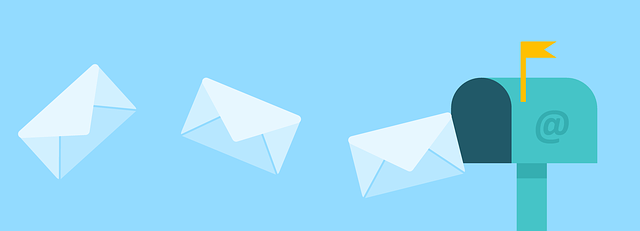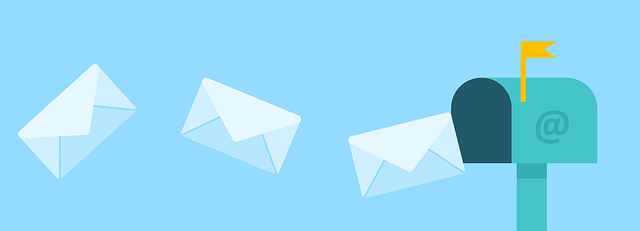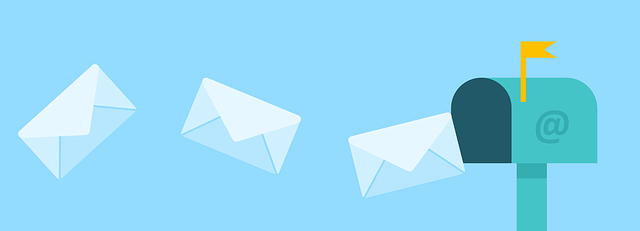Looking to skyrocket your customer acquisition and retention rates? Look no further than the powerful world of email marketing. In today’s competitive landscape, it’s crucial to have a strategic approach to your email campaigns, and that means tracking and analyzing key metrics. These metrics serve as your compass, guiding you towards success and helping you make data-driven decisions that will boost your bottom line.
In this article, we will explore the top 10 email marketing metrics that will revolutionize your customer acquisition and retention efforts. From the euphemistically named Open Rate, which measures the percentage of recipients who open your emails, to the Conversion Rate, which tells you how many subscribers actually take the desired action, these metrics provide invaluable insights into the effectiveness of your campaigns.
We’ll also delve into metrics like Click-Through Rate, Bounce Rate, Unsubscribe Rate, and Return on Investment (ROI), all of which play a crucial role in optimizing your email marketing strategy. By understanding and leveraging these metrics, you’ll be able to fine-tune your campaigns, engage your audience, and ultimately drive more revenue for your business.
Get ready to take your email marketing game to the next level!
Key Takeaways
- Open Rate, Click-Through Rate (CTR), Conversion Rate, and Bounce Rate are crucial metrics to track and analyze in email marketing.
- Engaging subject lines, A/B testing, and optimizing visuals can improve open rates and CTR.
- Landing page optimization is key to improving conversion rates.
- Cleaning email lists, personalizing content, and optimizing design can reduce bounce rate and minimize unsubscribe rate.
Open Rate
Boosting your email open rate is crucial for engaging your audience and increasing customer acquisition and retention. Engaging subject lines play a vital role in capturing your recipients’ attention and enticing them to open your email.
Craft concise and compelling subject lines that create a sense of urgency or curiosity. Additionally, implementing A/B testing strategies can help you identify which subject lines resonate better with your audience. Test different variations, such as using personalization or emojis, to see which ones yield higher open rates.
Analyze the data collected from these tests to make data-driven decisions on your subject line choices. By optimizing your open rate, you lay the foundation for a successful email marketing campaign. With a high open rate, you can transition seamlessly into the subsequent section about click-through rate, where you can further engage your audience and drive conversions.
Click-Through Rate
Enhancing your CTR is like adding wings to your campaign, allowing it to soar to new heights. Click-Through Rate (CTR) is a crucial metric in email marketing that measures the percentage of recipients who click on a link within your email.
A high CTR indicates that your email content is engaging and compelling, driving recipients to take action. To increase your CTR, consider conducting A/B testing to determine which subject lines, call-to-action buttons, or visuals resonate best with your audience. By analyzing the data from these tests, you can make data-driven decisions to optimize your email content and layout, ultimately improving your engagement rate.
As you transition into the next section about conversion rate, remember that a high CTR is an important step towards achieving your ultimate goal of converting recipients into loyal customers.
Conversion Rate
Transforming your audience into loyal customers is the ultimate victory in your email campaign, and the conversion rate is the key to unlocking that success. The conversion rate measures the percentage of recipients who not only opened your email but also took the desired action, such as making a purchase or signing up for a service.
To optimize your conversion rate, focus on landing page optimization. Ensure that your landing pages are visually appealing, user-friendly, and persuasive. Use A/B testing techniques to experiment with different designs, headlines, and call-to-action buttons to identify the most effective elements. Analyze the data to make data-driven decisions and continuously refine your approach.
By improving your conversion rate, you increase the likelihood of acquiring and retaining valuable customers.
Transitioning to the subsequent section about ‘bounce rate’, let’s now explore another metric that impacts the success of your email campaign.
Bounce Rate
Reducing the bounce rate is essential for ensuring the effectiveness of your email campaign. It reflects the number of recipients who left your website without taking any action, indicating a missed opportunity for engagement and conversion. To optimize your bounce rate and improve your email marketing metrics, consider implementing the following strategies:
-
Improve email deliverability by regularly cleaning your email list and removing invalid or inactive email addresses.
-
Personalize your email content and ensure it’s relevant to your target audience, increasing the chances of engagement.
-
Optimize your email design for different devices and email clients to ensure a seamless user experience.
-
Use double opt-in methods to verify email addresses and confirm the interest of your subscribers.
By implementing these bounce rate optimization strategies, you can significantly enhance the effectiveness of your email campaigns and drive better customer acquisition and retention.
Now, let’s move on to the next section about the ‘unsubscribe rate’ and explore ways to minimize it.
Unsubscribe Rate
To keep your subscribers engaged and satisfied, it’s important to understand how to minimize the rate at which they unsubscribe from your emails. A high unsubscribe rate can indicate a lack of customer engagement or dissatisfaction with your content.
To improve customer retention, focus on providing valuable and relevant content that meets their needs and interests. Personalization and segmentation can also help tailor your emails to specific customer preferences, increasing their engagement and reducing the likelihood of unsubscribing.
Additionally, ensure that your emails are delivered to the inbox by maintaining a good email deliverability rate. Regularly monitor your unsubscribe rate and make necessary adjustments to your email marketing strategy to keep it low and maintain a strong base of engaged subscribers.
Transitioning into the subsequent section about ‘return on investment (ROI)’, it’s important to evaluate the effectiveness of your email marketing efforts.
Return on Investment (ROI)
Maximize your email marketing success by measuring the return on investment (ROI), which will help you determine the immense impact and skyrocketing growth your campaigns can bring to your business.
ROI is a crucial metric that allows you to assess the effectiveness of your email marketing efforts in terms of financial gains. By calculating the ROI, you can determine the revenue generated from your campaigns and compare it to the costs incurred, giving you an accurate picture of the profitability of your email marketing strategy.
When analyzing ROI, it’s essential to consider factors like customer lifetime value (CLV) and email segmentation. CLV allows you to understand the long-term value each customer brings to your business, helping you prioritize your marketing efforts accordingly.
Email segmentation enables you to target specific customer groups with personalized content, increasing the chances of conversion and maximizing your ROI.
By continuously monitoring and optimizing your email marketing ROI, you can make data-driven decisions and develop a strategic approach that ensures the success of your customer acquisition and retention efforts.
Frequently Asked Questions
How can I improve my email deliverability rate?
To improve your email deliverability rate, follow these best practices for email deliverability.
First, regularly clean your email list to remove inactive or invalid email addresses.
Second, optimize your email content by avoiding spam trigger words and using relevant and engaging subject lines.
Third, authenticate your domain and use a reputable email service provider.
Fourth, monitor your email performance metrics and make adjustments as needed.
By implementing these strategies, you can boost your email deliverability and increase your chances of reaching your target audience effectively.
What is the average unsubscribe rate for email marketing campaigns?
On average, email marketing campaigns experience an unsubscribe rate, also known as email churn rate, of around 0.17%.
While this may seem low, it’s crucial to understand the importance of retaining subscribers.
To improve this rate, focus on implementing best practices for email opt-in methods, such as using double opt-in, clear and concise communication, and providing value to your subscribers.
By strategically analyzing data and employing these tactics, you can effectively boost customer acquisition and retention.
Are there any industry benchmarks for click-through rates?
When it comes to click-through rates (CTRs) in email marketing, industry benchmarks can provide valuable insights.
Email marketing trends show that personalized emails have become increasingly important in driving engagement and conversions.
Analyzing CTRs allows you to gauge the effectiveness of your email campaigns and understand how well your content resonates with your audience.
By comparing your CTRs with industry benchmarks, you can identify areas for improvement and optimize your email marketing strategy to boost customer acquisition and retention.
How can I calculate the lifetime value of a customer from email marketing efforts?
To calculate the lifetime value of a customer from email marketing efforts, you need to consider customer retention strategies and measure customer lifetime value.
Start by determining the average purchase value and purchase frequency of your customers. Multiply these two values to get the average customer value per year.
Next, calculate the average customer lifespan by dividing 1 by your customer churn rate.
Finally, multiply the average customer value per year by the average customer lifespan to find the customer lifetime value.
What are some effective strategies to reduce the bounce rate in email campaigns?
To reduce the bounce rate in email campaigns, you can employ effective email segmentation techniques and personalization strategies.
By segmenting your email list based on factors like demographics, behavior, or purchase history, you can tailor your content to each specific group, increasing relevancy and engagement.
Furthermore, personalizing your emails with dynamic content, such as inserting the recipient’s name or referencing their past purchases, can significantly improve open and click-through rates.
These data-driven strategies will help you optimize your email campaigns and reduce bounce rates.
Conclusion
In conclusion, analyzing email marketing metrics is crucial for boosting customer acquisition and retention. By monitoring open rates, click-through rates, conversion rates, bounce rates, unsubscribe rates, and return on investment, businesses can gain valuable insights to optimize their email campaigns.
One interesting statistic to note is that, according to a recent study, personalized subject lines can increase open rates by up to 50%. This data-driven approach allows marketers to strategically tailor their emails and maximize customer engagement, ultimately leading to higher conversions and improved ROI.







